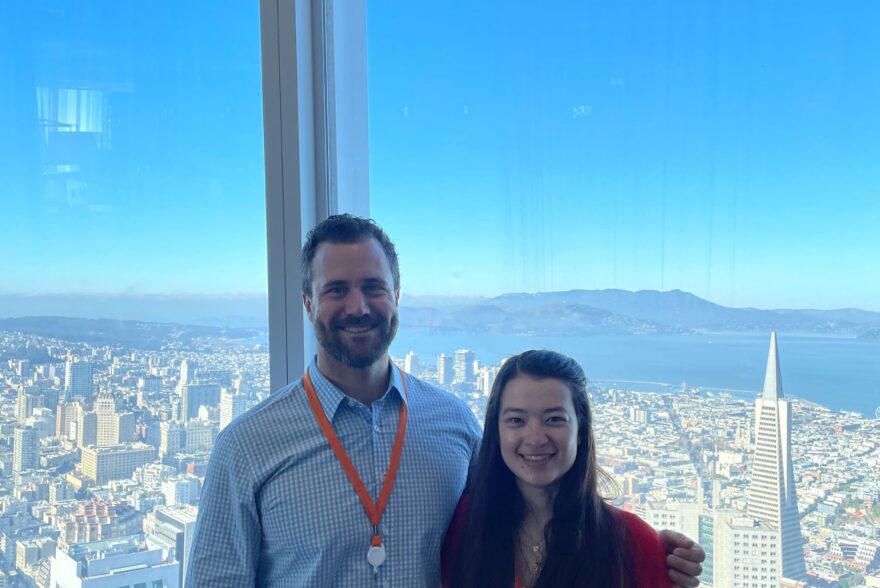From Forest Health to Human Health: a Blue Forest perspective on AFE and AGU conferences


Conferences like AGU and AFE are important platforms for knowledge sharing, seeing friends and colleagues, networking, and generally advancing Blue Forest’s work. Blue Forest sits between these two worlds and at both conferences put the dynamism of our team on display.
Written by: Micah Elias, Senior Scientist for Natural Capital
Before the new year, I attended two conferences put on by the Association for Fire Ecology (AFE) and the American Geophysical Union (AGU).
AFE brings together researchers, state and federal agencies, Tribal Nations, companies, and practitioners to think critically about how to live alongside fire. At the conference, Blue Forest’s Kirsten Hodgson, Project Associate, and Signe Stroming, Senior Project Associate, presented results from the study The Human Health Benefits of Improving Forest Health in California, which was completed in partnership with the California Council on Science and Technology and explored the linkages between forest management and improved human health from decreased smoke. Specifically, the report delved into the potential to engage health organizations in proactive forest management. I also presented our paper “Financial Analysis of Innovative Wood Products and Carbon Finance to Support Forest Restoration in California,” which laid the conceptual groundwork for the California Wildfire Innovation Fund.
AGU focuses on cutting-edge science which strives to understand our planet, the environment, and our role in ensuring a prosperous future. At AGU, Blue Forest’s Dr. Tessa Maurer, Senior Project Scientist eloquently explained the Blue Forest philosophy on actionable science: 1) co-create research questions with project developers, 2) focus on site-specific evaluation at appropriate scales, and 3) incorporate interdisciplinary methods. This was coupled with a call to action for the scientific community to better ground the questions we ask in real-world issues informed by stakeholders and co-develop the outputs of science to ensure the findings can be used and applied.
These conferences provide an opportunity to stay up-to-date with the most recent developments in the field, but just as importantly, provide the opportunity to see colleagues and friends. At AGU, I managed to spend happy hours with friends from UC Berkeley (Go Bears!) while connecting with new potential science partners. I also learned about the great work that Don Lindsay and his team at California Geologic Survey is doing as part of the new Burned Watershed Geohazards Program. This program works to prepare communities for wildfires using tools like the Pre-Fire Hazard Assessment to pinpoint the areas of highest risk from post-fire hazards, such as flooding and debris flows. These tools may provide another way Blue Forest can leverage the reduced risk provided by proactive forest management to increase funding for restoration projects.
Conferences like AGU and AFE are important platforms for knowledge sharing, seeing friends and colleagues, networking, and generally advancing Blue Forest’s work. Blue Forest sits between these two worlds and at both conferences put the dynamism of our team on display. I walked away from these experiences with a renewed appreciation for my colleagues and motivation to work restoring healthy, fire-resilient forests.